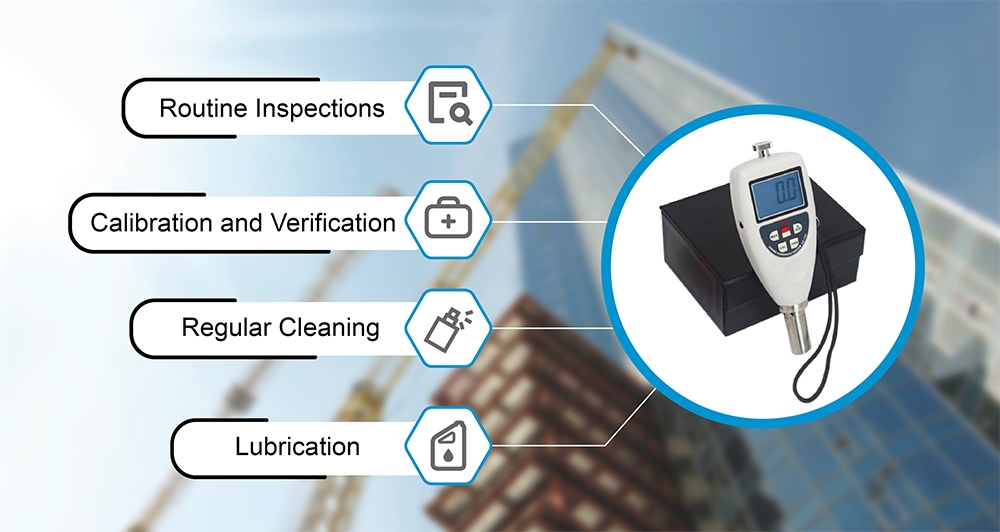A hardness tester is an essential instrument used in various industries to measure the hardness of materials, providing crucial information about their mechanical properties. To ensure accurate and consistent results, proper maintenance of the hardness tester is imperative. In this article, we will discuss some key steps and guidelines to effectively maintain your hardness tester.

- Regular Cleaning. The first and foremost step in maintaining a digital hardness tester is regular cleaning. Dust, dirt, and contaminants can accumulate on the surfaces of the machine, affecting its accuracy and performance. Use a soft, lint-free cloth to wipe down the exterior and interior components, such as the indenter, anvil, and other moving parts. Avoid using abrasive materials that might scratch the surfaces.
- Calibration and Verification. Calibration is crucial to maintaining the accuracy of your hardness tester. Regularly calibrate the machine using certified calibration blocks or samples with known hardness values. This ensures that your instrument is providing reliable results. Additionally, verify the accuracy of the measurements by comparing them with reference hardness standards. If discrepancies are detected, take appropriate measures to recalibrate the device.
- Lubrication. Proper lubrication of the moving parts is essential to ensure smooth operation and extend the lifespan of your hardness tester. Over-lubrication can attract dirt, while under-lubrication can lead to increased friction and wear. Keep a record of the lubrication schedule to maintain consistency.
- Routine Inspections. Perform routine inspections to identify any signs of wear, damage, or misalignment. Check for loose screws, bolts, or other fasteners that might affect the stability and accuracy of the machine. Inspect the cables and connections for any signs of fraying or damage. Address any issues promptly to prevent further damage and ensure the reliability of your hardness tester.
- Environmental Conditions. Maintaining suitable environmental conditions for your hardness tester is vital. Avoid exposing the instrument to extreme temperatures, humidity, or direct sunlight, as these factors can adversely affect its performance and accuracy. Store the hardness tester in a controlled environment when not in use to prevent unnecessary wear and tear.
- User Training. Proper training of the users is essential for both accurate measurements and the longevity of the hardness tester. Ensure that operators are well-trained in using the instrument correctly, as improper usage can lead to premature wear and inaccurate results. Provide guidelines on handling, cleaning, and basic troubleshooting to minimize the risk of user-induced issues.
A well-maintained hardness tester is essential for obtaining accurate and reliable hardness measurements. By following the steps outlined in this article, you can prolong the lifespan of your instrument, minimize downtime, and ensure that your hardness tester continues to provide precise results for years to come. Remember, proper maintenance not only saves time and money but also contributes to the overall quality of your work in various industries.

